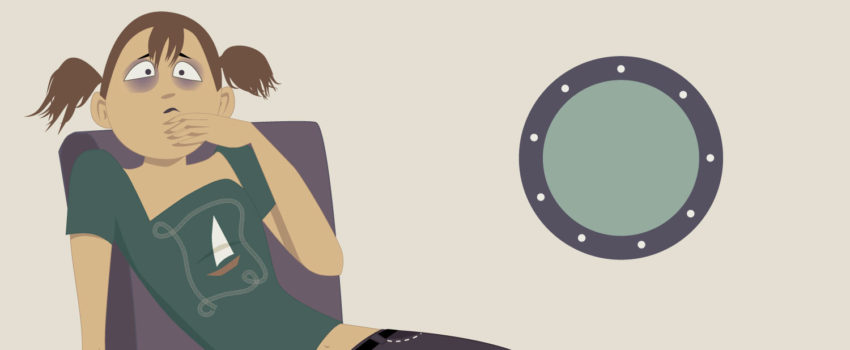
Motion sickness or kinetosis, also known as travel sickness, is a condition in which a disagreement exists between visually perceived movement and the vestibular system’s sense of movement. Depending on the cause, it can also be referred to as seasickness, car sickness, simulation sickness or airsickness.
Dizziness, fatigue, and nausea are the most common symptoms of motion sickness. Sopite syndrome in which a person feels fatigue or tiredness is also associated with motion sickness. Nausea in Greek means seasickness (naus means ship). If the motion causing nausea is not resolved, the sufferer will usually vomit. Unlike ordinary sickness, vomiting in motion sickness tends not to relieve the nausea.
The most common hypothesis for the cause of motion sickness is that it functions as a defense mechanism against neurotoxins. The area postrema in the brain is responsible for inducing vomiting when poisons are detected, and for resolving conflicts between vision and balance. When feeling motion but not seeing it (for example, in a ship with no windows), the inner ear transmits to the brain that it senses motion, but the eyes tell the brain that everything is still. As a result of the discordance, the brain will come to the conclusion that one of them is hallucinating and further conclude that the hallucination is due to poison ingestion. The brain responds by inducing vomiting, to clear the supposed toxin.
Many cures and preventatives for motion sickness have been proposed.
Activity